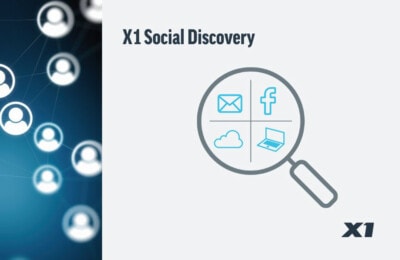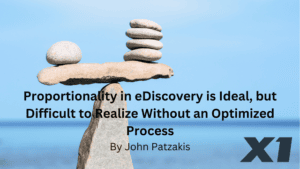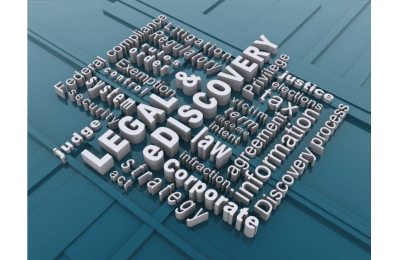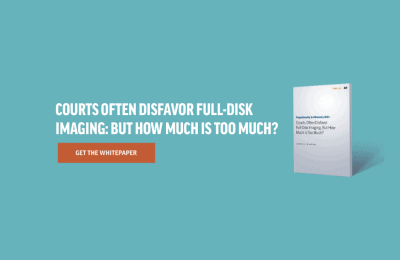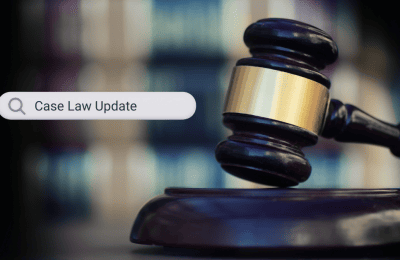As Founder and Executive Chairman of X1, John leads the company’s strategy and business development efforts. He has an extensive background and expertise in eDiscovery and corporate compliance, combining strong knowledge of both the law and the supporting technologies in those areas. Prior to joining X1, John served as a consultant providing strategic planning and product strategies to eDiscovery and compliance solution providers. John also spent nearly a decade at Guidance Software, Inc. (NASDAQ: GUID) where he held senior management positions, including Chief Strategy Officer, Vice Chairman, Chief Legal Officer and President and CEO. While at Guidance, John led the transition of the company from start-up to a major enterprise software firm and grew revenues from $5 million to $40 million during his tenure.
Prior to joining Guidance, John spent eight years practicing law in the fields of commercial litigation and business transactions. John received an undergraduate degree from the University of Southern California and a JD from the Santa Clara University School of Law.
The adoption of cloud-based Microsoft 365 (“MS 365”) by enterprises continues to grow exponentially, with the company recently reporting 300 million monthly active users, and the addition of over 100 petabytes of …
The legal field is seeing very strong demand for social media evidence collection software and services. However, Facebook, the most widely used social media platform, recently rolled out a completely …
(Originally Published October 24, 2022 by JD Supra and EDRM) Proportionality-based eDiscovery is a goal that all corporate litigants seek to attain. Under Federal Rule of Civil Procedure 26(b)(1), parties …
Every litigator and eDiscovery practitioner is aware of the critical importance of analytics as a tool to support their cases. AI-driven analytics supercharges compliance investigations, data security, privacy audits, and …
The world has in many ways returned to life as it was prior to the pandemic. Restaurants and hotels are packed again. Children are all back in their classrooms. Rock …
As succinctly noted by The Florida Bar Association in its publication, Florida Law Journal: “Social media is everywhere. Nearly everyone uses it. Litigants who understand social media — and its benefits …
Proportionality is now the hottest legal issue involving eDiscovery, with the largest number of eDiscovery-related cases in the past year addressing the subject. Relativity eDiscovery attorney David Horrigan recently led …
Relativity and X1 have published an updated joint legal whitepaper addressing full-disk imaging as a disfavored collection practice in civil litigation, with Relativity eDiscovery attorney David Horrigan as the lead author. …
Under Federal Rule of Civil Procedure 26(b)(1), parties may discover any non-privileged material that is relevant to any party’s claim or defense and proportional to the needs of the case. …
Legal Tech software CEOs often grapple with two competing challenges: Growing revenue in a manner that supports how customers buy their products for their individual cases, while at the same time maximizing …
A recent decision from the Southern District of New York provides that the parties’ have obligations to conduct reasonable searches during discovery, but such searches may be targeted. The court …
The International Legal Technology Association (ILTA) recently published a very informative and comprehensive law firm eDiscovery practice survey, “2021 Litigation and Practice Support Survey.” ILTA received responses from litigation support …
While the pandemic disrupted the workplace during its height, it is now becoming clear that a more permanent transformation has taken place. Employees and their electronic information assets are far more …
Social media and other web-based data is relevant to nearly every legal case and investigation. The high volume of relevant social media evidence means that lawyers are under an ethical duty …
The most important case of 2021 so far concerning social media evidence is arguably Edwards v. Junior State of America Foundation, No. 4:19-CV-140-SDJ, (US Dist. CT, E.D. Texas April 23, 2021). …
Recently I participated in a webinar on technology and politics sponsored by USC Center for the Political Future. I mostly managed to steer clear of the political discussion and instead …
Most core eDiscovery costs (outside of attorney review) stem from over-collection of electronically stored information (ESI). While direct collection costs can seem inexpensive, law firm Nelson Mullins notes that “over …


